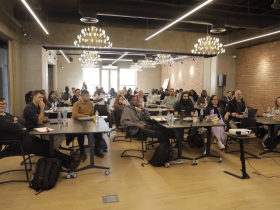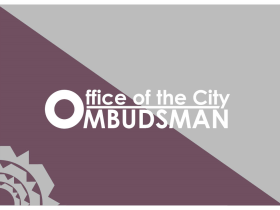“Our people are our greatest asset …”
The above statement is common amongst business owners and managers. It can also likely be substantiated by
taking a business’s payroll costs and expressing it as a percentage against its revenue. Depending on the
organisation and industry, data would be available to prove that a business invests anywhere between 30% and
60% of its revenue towards its staff.
As such, it is common for the rebuttal to be “but that’s not us … we have a wellness programme – I can show
you all our stats!”.
With corporate wellness initiatives having over the past few years become more entrenched in businesses
across South Africa, new workplace wellness trends of 2023 include supporting mental health, getting creative
with paid time off (PTO) and leveraging in-office days and in-person gatherings to build employee engagement
and connection. These trends are stimulating important discussions around how businesses are approaching
organisational health. Here are some of the trends we are following closely.
The first key trend is the shift in where corporate wellness discussions are happening. There’s often a
perception that this is something which might happen within the Human Capital sphere of influence or perhaps
the marketing team organising an annual activation. If we look at our engagements, corporate wellness and
organisational health is something that is recently receiving direct input from senior executives in both the
public and private sector.
The second noticeable trend is an appreciation of how corporate wellness delivers a true financial return.
While there has long been some degree of recognition that a healthy workforce will see decreased levels of
absenteeism, presenteeism and related issues, it has often been hard to quantify. We recently conducted a
case study on behalf of one of our top 5 clients – a major state-owned entity – and the financial data was clear:
For every R1 invested in their workforce, the measured return was R12.10. These are the kind of numbers that
resonate with all decision-makers.
A third trend we’re monitoring relates to how organisations approach the measurement of their organisational
health. We work with many of the largest public sector entities in the country and we have been highly
impressed with their commitment to organisational health and investing in their staff. However, if we can
contrast our public and private sector partners, the public sector entities are particularly focused on the
measurement of activities, such as the number of people vaccinated or tested and compliance to implementing
programmes as per the Department of Public Serve and Administration (DPSA) Pillars for wellness – while the
private sector tends to be more focused on outcomes such as employee performance metrics and the ability to
attract and retain key talent and achievement of the organisational strategy. It is important that we don’t get
caught up in the transactional management of wellness programmes and compliance and lose track of the
outcomes and goals we have set for employers and organisations.
The fourth trend that we are particularly cognisant of at present is the spike in mental health related issues and
the relationship with the “work-from-home” debate. There is no question that the COVID-19 pandemic
changed the nature of work and served as an opportunity to re-set work-life balance. While this was sorely
needed, we can’t ignore the fact that mental health issues are spiking across the board and we are seeing
people struggling with feelings of isolation, relationship issues, and substance abuse. As organisations are
starting to implement return to work policies in terms of staff being in office physically and hybrid working
from home schedules, they need to be aware of these issues and ensure they have coping mechanisms in place
to support employees and address mental health risks.
According to the third edition of McKinsey’s American Opportunity Survey conducted in 2022, when people
have the opportunity to work flexibly, 87% of them take it. One thing is for certain: employees have become
used to remote and hybrid work, and they’ll continue to demand flexibility from their employers who will have
to look at optimised hybrid working models if they are looking to get employees back in the office.
However, with all of the benefits that hybrid work offers, businesses must also contend with the negative
aspects of a dispersed workforce, which include a lack of connection employees experience to their colleagues,
company, and community. The fix? A best-of-both worlds approach. This may mean having an in-person office,
and using it strategically for collaboration sessions or building culture and morale within teams while more
autonomy is allowed for where, when, and how people accomplish their work. The only way to ensure you find
the right balance is to engage with employees to ensure your approach aligns with their expectations.
In addition to the trends mentioned, we also expect companies to ramp up their employee resource group
(ERG) funding so that key employee initiatives such as diversity, equity and inclusion (DEI), sustainability, well-
being, and professional development can flourish.
Workplace wellness will continue to evolve to meet the unique needs of modern employees and we are
mindful of that evolution. The statement of staff being the greatest asset within any organisation indeed holds
true. Building a comprehensive workplace wellness program is one way to ensure that a workforce is healthy,
content and engaged. As such, it is imperative that businesses understand and measure their organisational
health. By asking the right questions, organisations can structure their corporate wellness programmes for
maximum benefit for all stakeholders.
























Leave a Reply